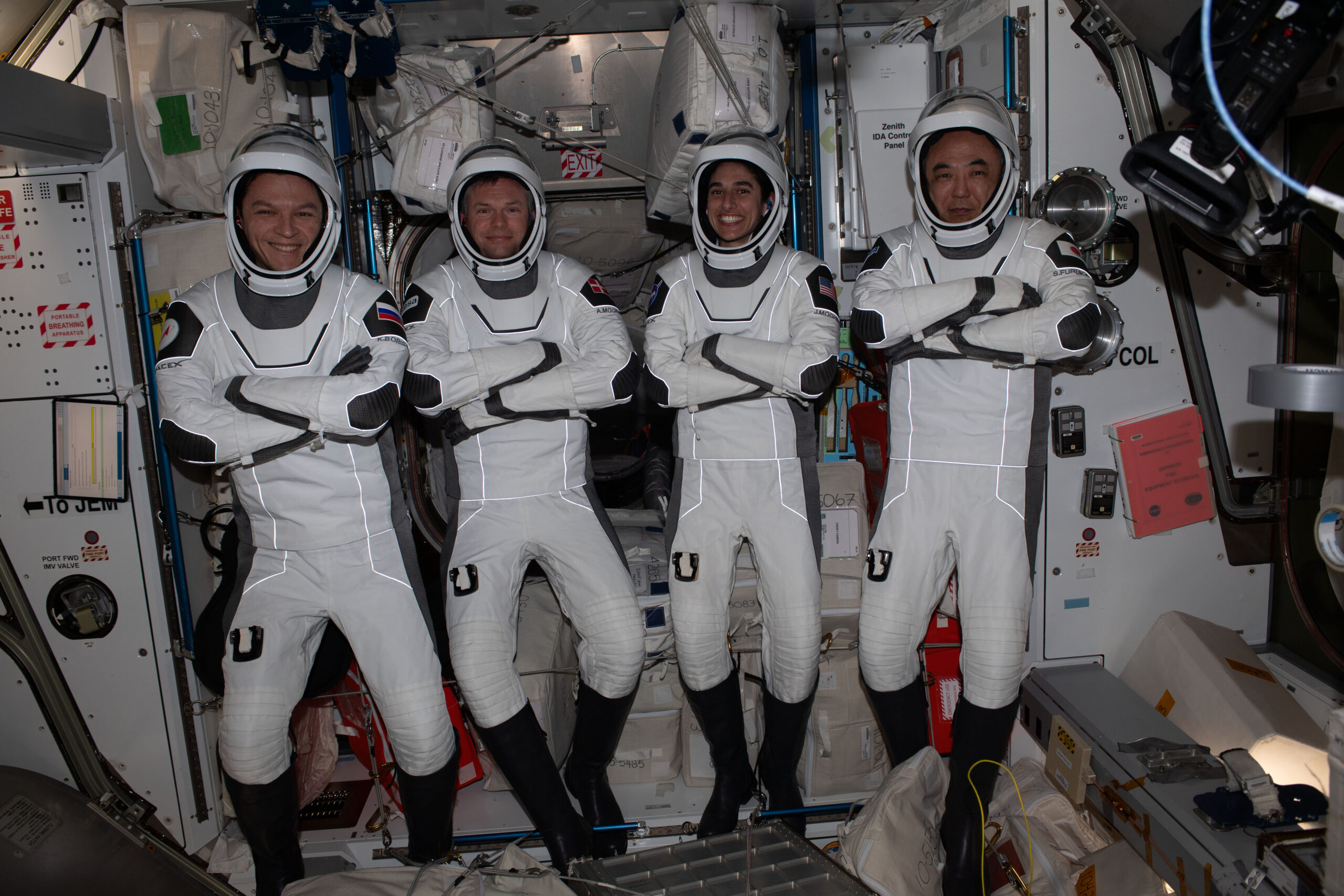
Four humans from four nations, including the second Japanese astronaut to log a cumulative year in space and Denmark’s first International Space Station (ISS) commander, are preparing to depart the sprawling orbital complex at 11:05 a.m. EDT Monday, for a parachute-aided splashdown off the Florida Coast at 5:35 a.m. EDT Tuesday. Crew-7 Commander Jasmin Moghbeli of NASA, Denmark’s Andreas Mogensen of the European Space Agency (ESA), Russian cosmonaut Konstantin Borisov and Japan Aerospace Exploration Agency (JAXA) astronaut Satoshi Furukawa will wrap up their 6.5-month-long Expedition 69/70 increment after more than 199 days in low-Earth orbit, just a few hours shy of setting a new record for the longest single spaceflight ever undertaken by a U.S. crew-carrying vehicle.
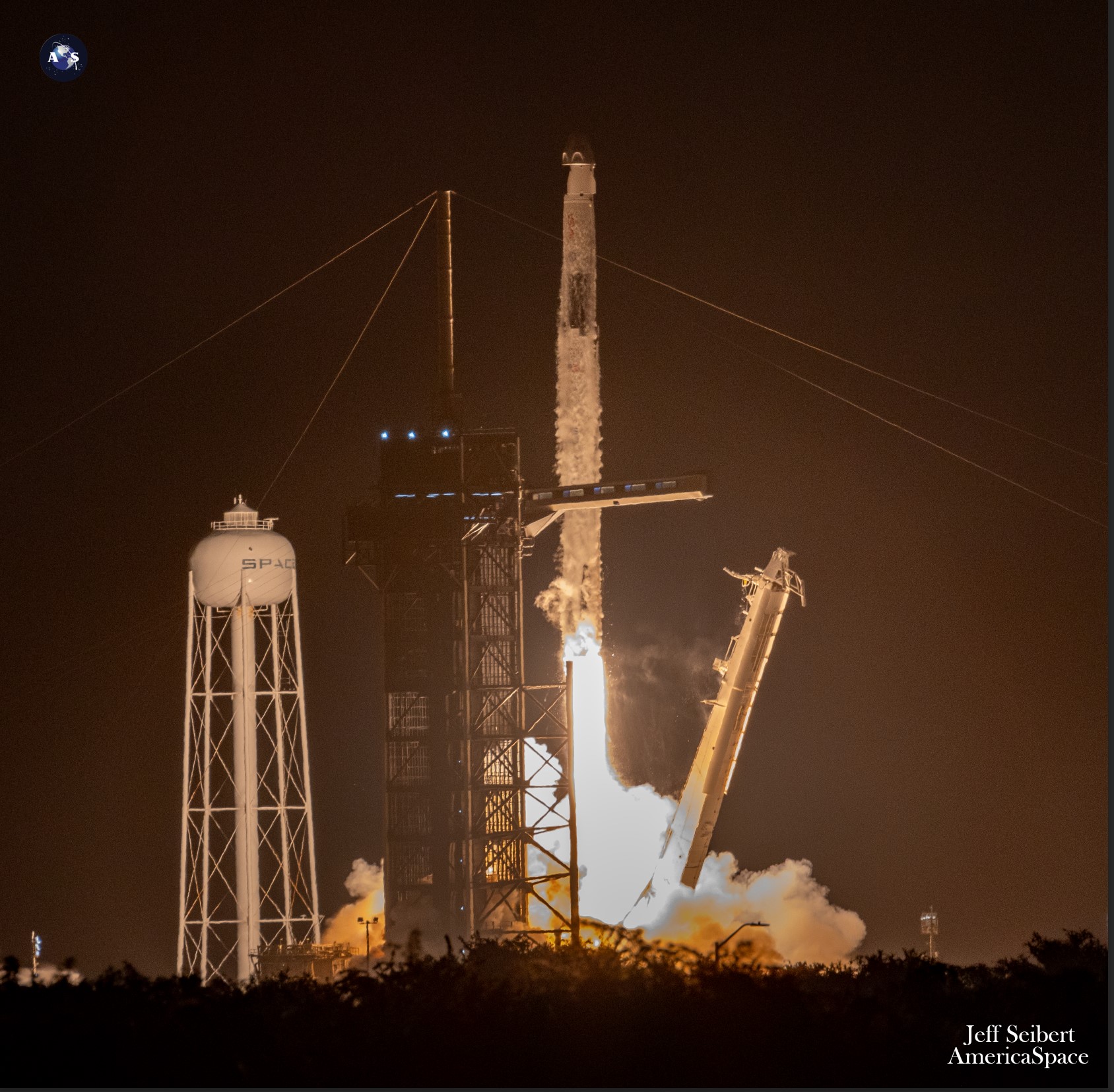
The quartet will head home aboard SpaceX’s Dragon Endurance, which is closing out the third orbital voyage of her career and returning to Earth after racking up more than 530 days in space, over 8,400 completed orbits of Earth and in excess of 225 million miles (360 million kilometers) traveled. Endurance was the third Crew Dragon to carry humans—after the currently-in-space Endeavour and her sister Resilience—and sets herself in pole position as the most flight-experienced member of the four-ship fleet.
Endurance first launched in November 2021 for Crew-3, transporting NASA astronauts Raja Chari, Tom Marshburn and Kayla Barron, together with ESA flyer Matthias Maurer of Germany, to the space station for a six-month stay, spanning Expeditions 66/67. That crew, who chose their ship’s name to recognize “the tenacity of human spirit” in overcoming the COVID-19 coronavirus pandemic, and offered a tip of the hat to Sir Ernest Shackleton’s Antarctic exploration vessel, returned safely to Earth in May of 2022 after 176 days in space and over 2,700 orbits.
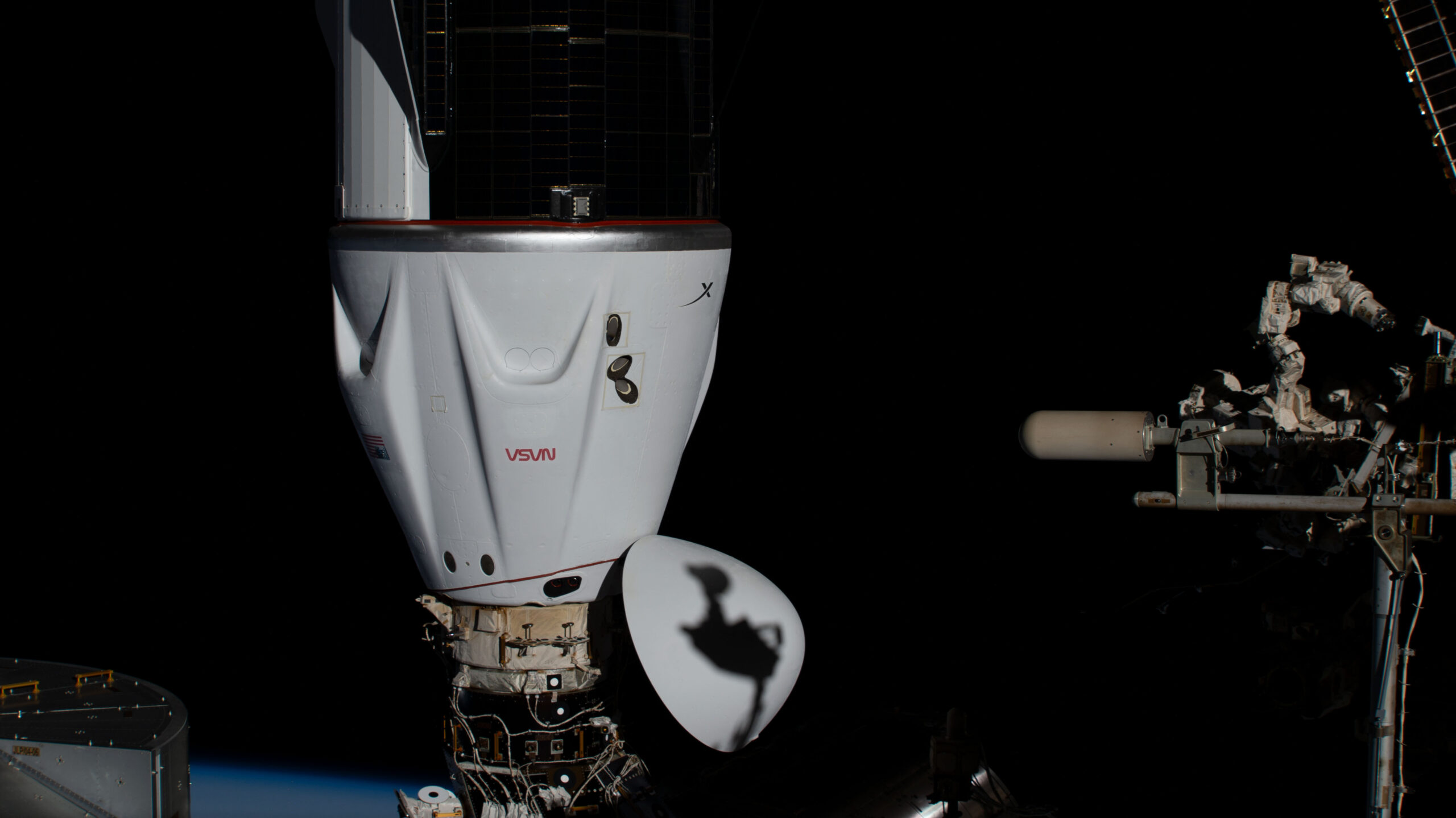
She was put immediately back into service for the half-year Crew-5 mission, launching NASA astronauts Nicole Mann and Josh Cassada, Japan’s Koichi Wakata and Anna Kikina, the first Russian cosmonaut ever to ride a Commercial Crew vehicle, in October 2022. Returning home in March of last year, after 157 days in space and more than 2,500 orbits, she established a new cumulative total of over 333 days across her first two missions and set herself in first place as the most flight-experienced Crew Dragon, a record she relinquished last April to her veteran sister Endeavour then won back in early January 2024.
Endurance launched for her third and current mission at 3:27 a.m. EDT last 26 August, rising from historic Pad 39A at Florida’s Kennedy Space Center (KSC) and lofting Moghbeli, Mogensen—the first non-U.S. citizen to serve as pilot of a U.S. crewed vehicle—Furukawa and Borisov on the initial leg of their trek to the ISS. After almost 30 hours in independent flight, Endurance docked autonomously at the forward-facing port of the station’s Harmony node at 9:16 a.m. EDT on the 27th and after hatch opening at 10:58 a.m. EDT the newcomers folded into the incumbent Expedition 69 crew, led by Russia’s Sergei Prokopyev.
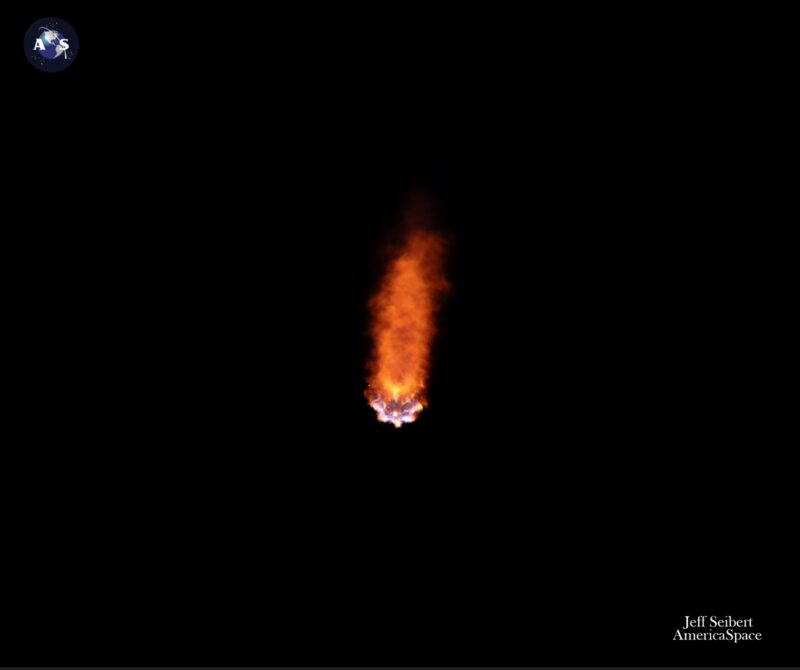
After a week-long operational handover, their Crew-6 predecessors—NASA astronauts Steve Bowen and Warren “Woody” Hoburg, Russian cosmonaut Andrei Fedyayev and Sultan Al-Neyadi of the United Arab Emirates (UAE)—departed in Dragon Endeavour and returned to Earth, wrapping up 185 days in space. And in mid-September, Soyuz MS-24 arrived with Russia’s Oleg Kononenko and Nikolai Chub, plus NASA astronaut Loral O’Hara, to replace the outgoing Prokopyev, Dmitri Petelin and record-setting Frank Rubio, who returned home in late September aboard Soyuz MS-23 after 371 days in orbit.
With a new crew in place, Expedition 70 formally commenced last 26 September under the command of Mogensen, who became the seventh ESA astronaut and the first Dane to helm the sprawling orbital complex. “A dream come true,” Mogensen recently tweeted, “where I got to live and work on the International Space Station for more than six months, conducting science from Denmark, Europe and the world in areas like our immune system, water filtration, virtual reality and how we sleep on the space station.”
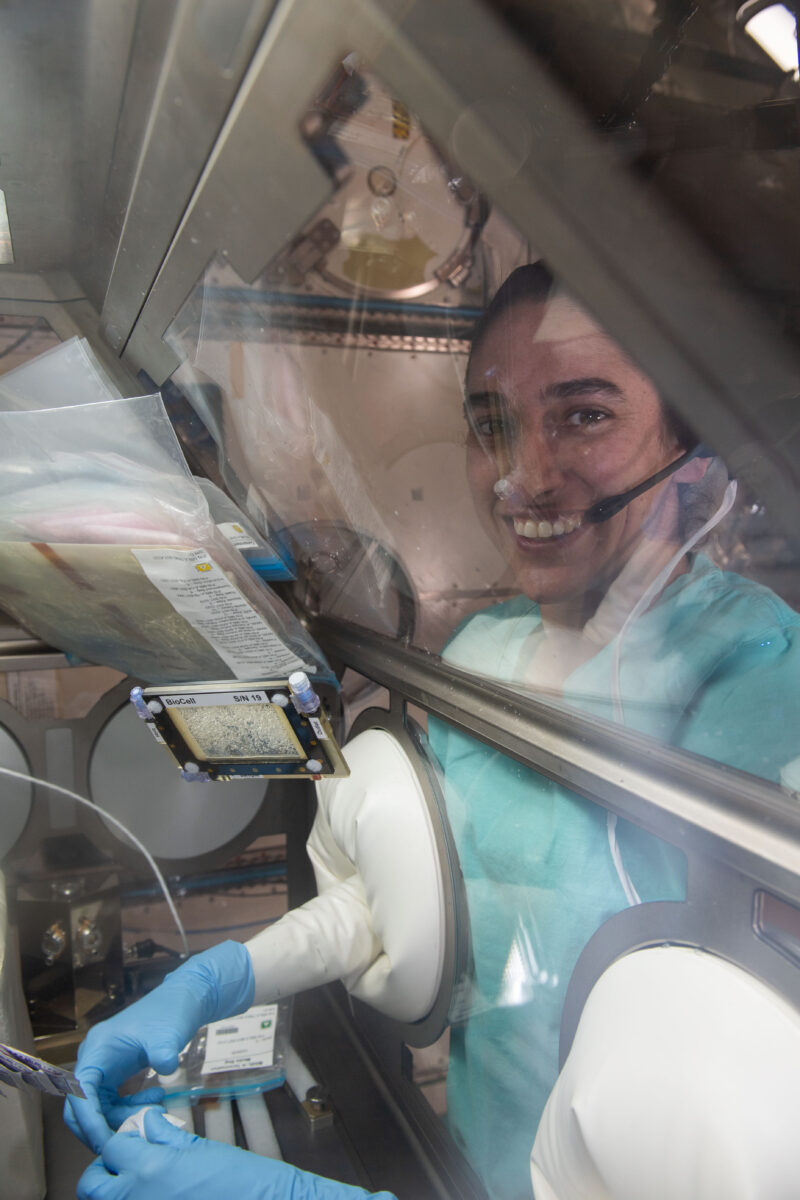
But what did not come Mogensen’s way, sadly, was the opportunity to perform a spacewalk. Original plans called for two U.S. sessions of Extravehicular Activity (EVA) on 12 and 20 October 2023, the first by O’Hara and Mogensen to retrieve microbial specimens and replace a high-definition external camera and the second by O’Hara and Moghbeli to remove a faulty Radio Frequency Group (RFG) electronics box from a communications antenna bracket and replace one of 12 Trundle Bearing Assemblies (TBAs) on the port-side Solar Alpha Rotary Joint (SARJ).
Unfortunately, on 9 October flakes of debris were observed emanating from one of two radiators on Russia’s Nauka (“Science”) lab, indicative of a coolant leak. Although the leak ceased within a couple of days, NASA elected to postpone both EVAs until no sooner than 19 and 30 October, pending a review of data and video associated with the incident.
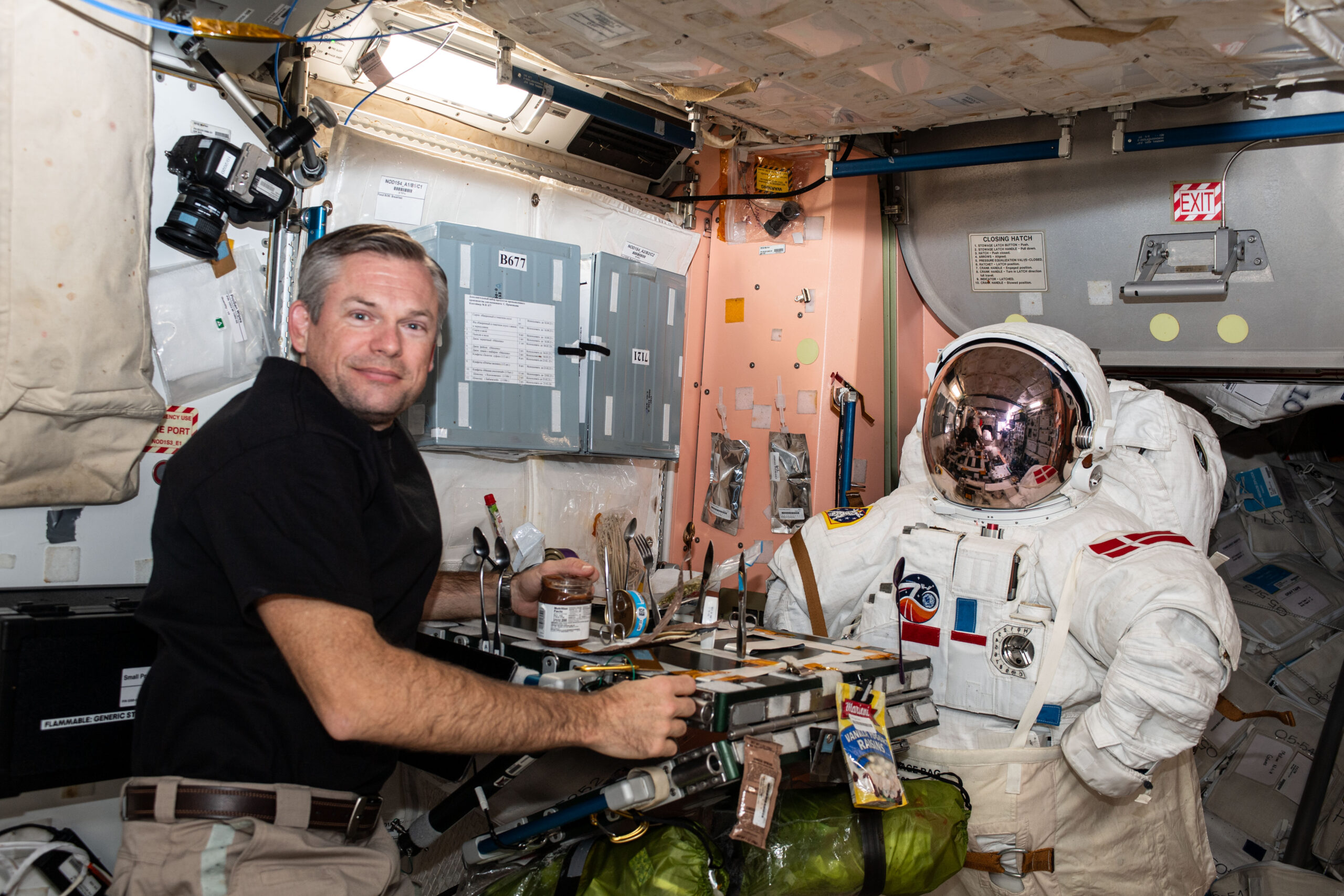
In the meantime, on 16 October the first of the two spacewalks, by O’Hara and Mogensen, was postponed initially until December and eventually into 2024, with NASA officials noting that its tasks were not time-critical. The second spacewalk, by Moghbeli and O’Hara, was later moved to 1 November to permit additional preparation time.
By this stage, Kononenko and Chub performed a Russian-based EVA on 25 October, during which they spent seven hours and 41 minutes outside the ISS inspecting and photographing the troubled radiator, deploying a tiny nanosatellite and installing a synthetic radar communications system, one of whose panels could not be fully unfurled. For their part, Moghbeli and O’Hara—both making the first EVAs of their respective careers—logged six hours and 42 minutes in the vacuum of space.
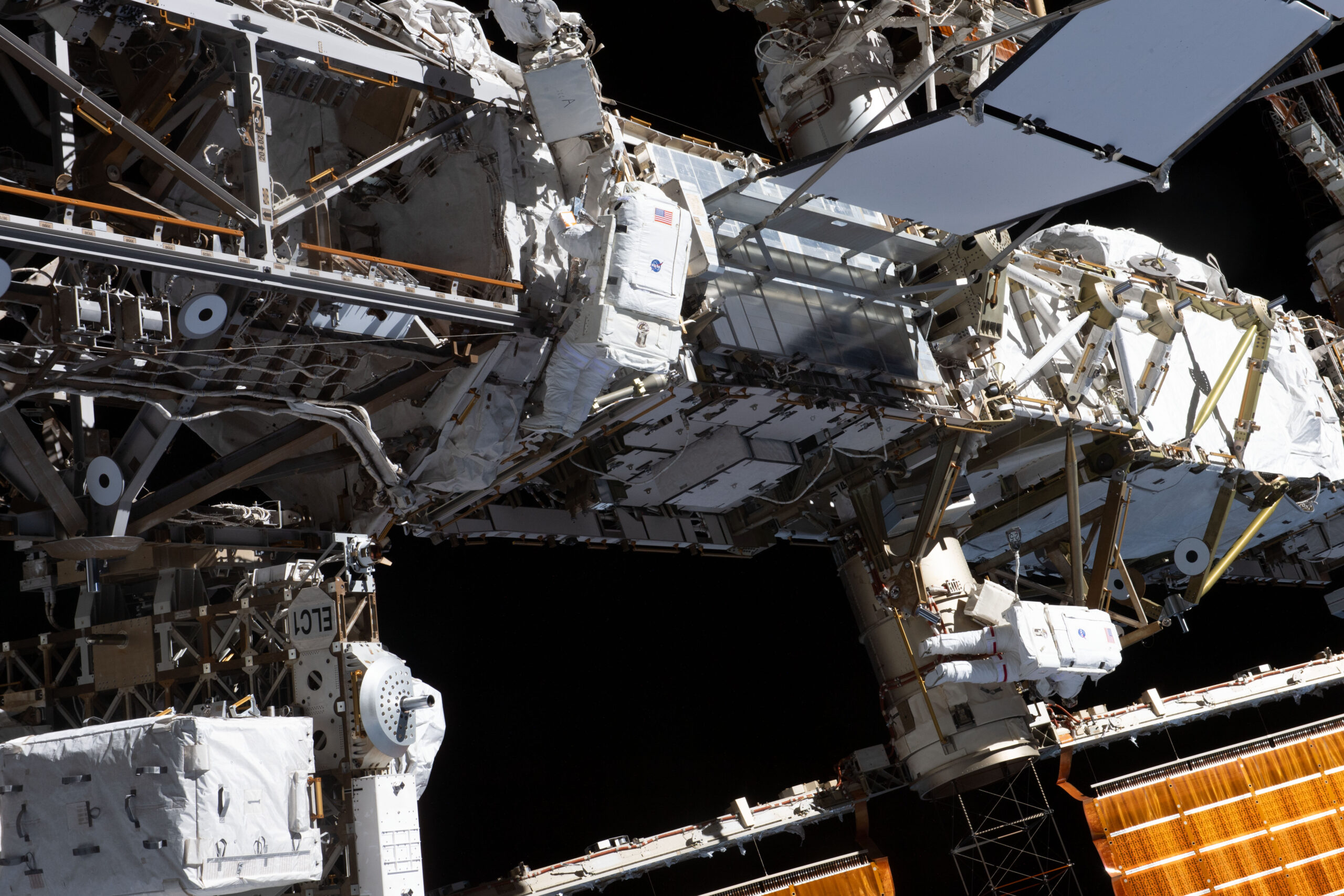
Theirs marked only the fourth all-female spacewalk, following three prior EVAs by Expedition 61’s Christina Koch and Jessica Meir between October 2019 and January 2020. During their time outside, Moghbeli and O’Hara replaced the TBA but although they were able to make an assessment of multi- ran out of time to complete the RFG task, which has been deferred to Expedition 71.
November saw the arrival of SpaceX’s CRS-29 Cargo Dragon mission, laden with over 6,500 pounds (2,950 kilograms) of equipment, payloads and supplies, which spent a month docked at the station before returning to Earth on 22 December. And at the end of January, for the first time a SpaceX Falcon 9 rocket launched Northrop Grumman Corp.’s NG-20 Cygnus cargo ship with more than 8,200 pounds (3,700 kilograms) of research in robotic surgery, cartilage tissue growth and semiconductors.
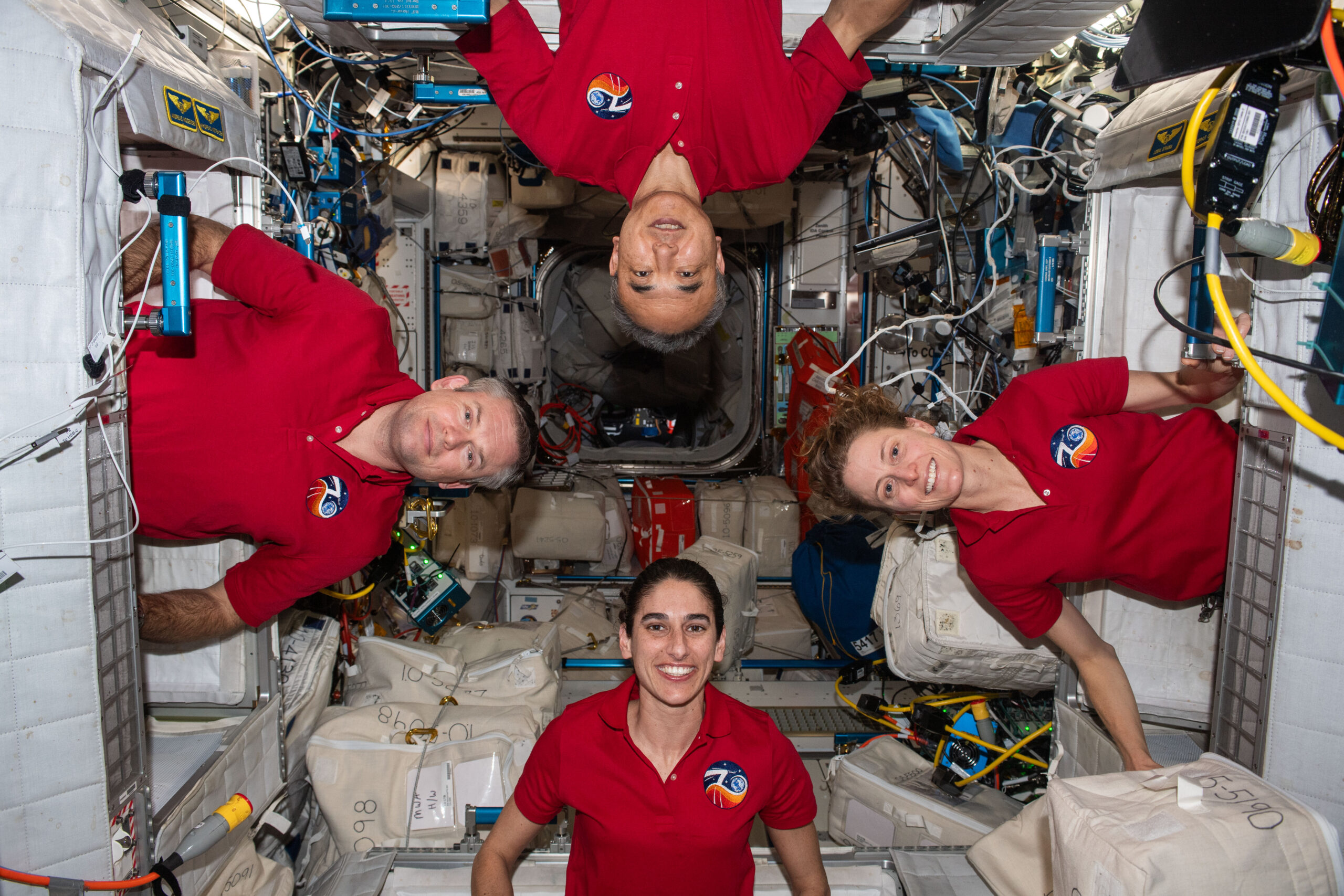
Research ran the gamut from cardiac activity and blood pressure measurements to plasma physics, from eye health to observations of accelerated aging-like symptoms in human arteries and from quantum physics research to the observation of thunderstorms and electrical discharges. A pair of Russian Progress cargo freighters arrived in December and February, with two others departing in November and last month.
And in January, Dragon Freedom ferried Ax-3 crewmen Mike Lopez-Alegria, Walter Villadei, Marcus Wandt and Alper Gezeravcı—the first national space traveler of Türkiye—to the ISS for what turned out to be an almost three-week mission emphasizing science, technology and educational outreach. With U.S., Russian, Danish, Japanese, Italian, Swedish and Turkish crewmembers (and Lopez-Alegria of Spanish heritage), the presence of the A-Ax-3 crew saw Expedition 70 temporarily boosted to eight nationalities.
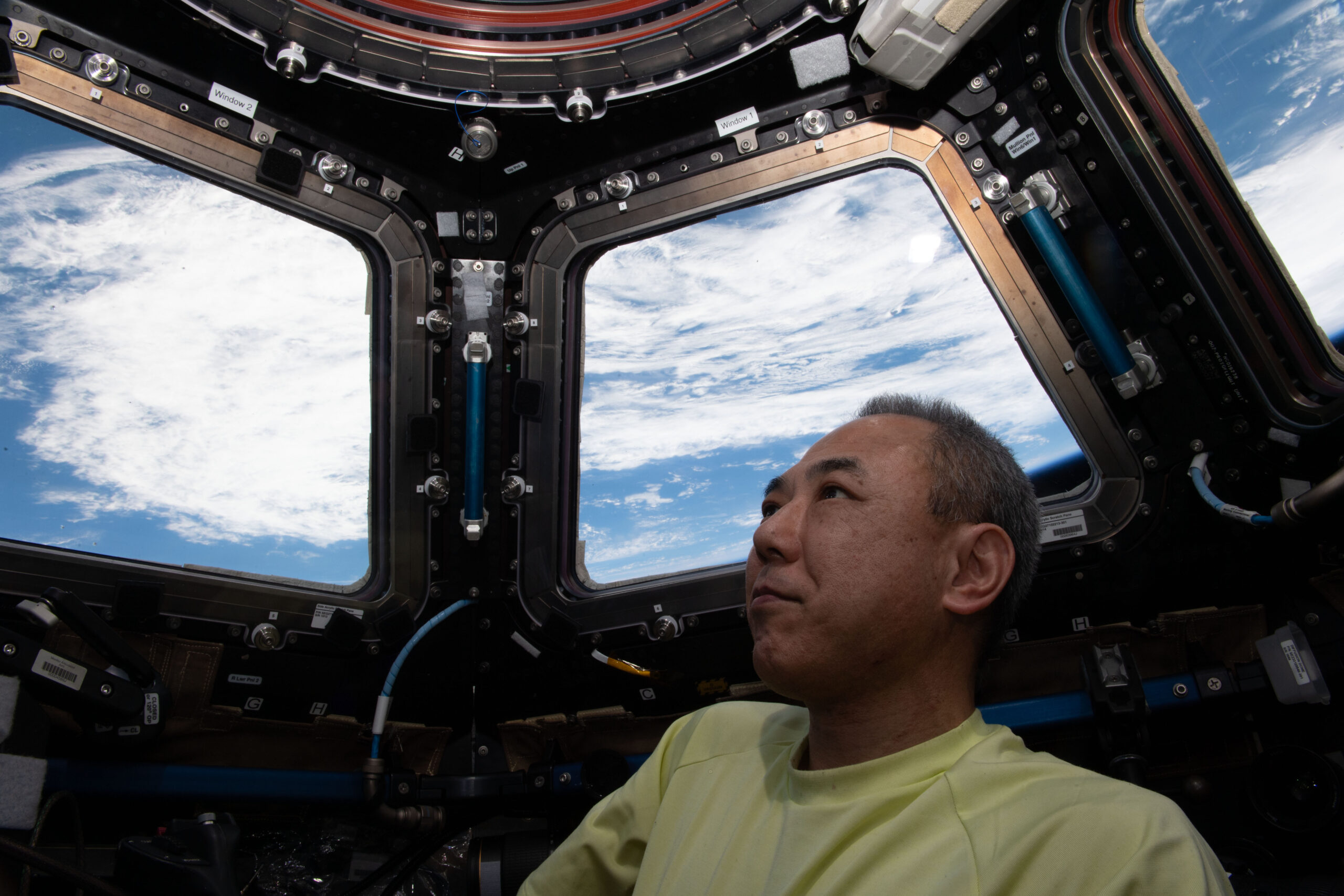
Last weekend, Dragon Endeavour roared uphill with Crew-7’s replacements, the Crew-8 quartet of NASA astronauts Matt Dominick, Mike Barratt and Jeanette Epps, together with Russian cosmonaut Aleksandr Grebenkin, who will remain aboard the space station until August. Having fallen foul to several days of weather-induced delay, the newcomers earned the unenviable moniker of “Crew-L8” and their later-than-intended arrival pushed Crew-7 ever closer to the nominal 210-day limit for a Crew Dragon to remain in space.
A splashdown on Monday at 5:35 a.m. EDT will conclude Crew-7 after 199 days, two hours and eight minutes, wrapping up over 3,180 orbits of Earth and will put this mission in second place on the list of the longest spaceflights ever undertaken by a U.S.-built crew-carrying vehicle. Only Crew-2, which ended in November 2021 after 199 days and 17 hours, and more than 3,190 orbits, has spent longer off the planet, with several Russian Soyuz missions since August 1998 having greatly exceeded 200 days in space.

Earlier Sunday, Mogensen officially relinquished command of Expedition 70 to Kononenko, who will helm the station through September and lead the transition into Expedition 71 later this month. “Time is a bit of a strange concept,” Mogensen waxed, noting that although Crew-7’s six-months-plus in orbit has passed extremely quickly, their launch last August now seems “a lifetime ago”.
He paid glowing tribute to Kononenko as the incoming commander. As well as being one of only four people to have voyaged five times to the ISS—after Yuri Malenchenko, Fyodor Yurchikhin and Mike Lopez-Alegria—Kononenko last month passed fellow Russian cosmonaut Gennadi Padalka’s 878-day cumulative record for the greatest amount of time spent in space by any human. Kononenko will return to Earth in September 2024 after logging about 1,100 days in orbit across his cosmonaut career, equivalent to about five percent of his lifetime to date.
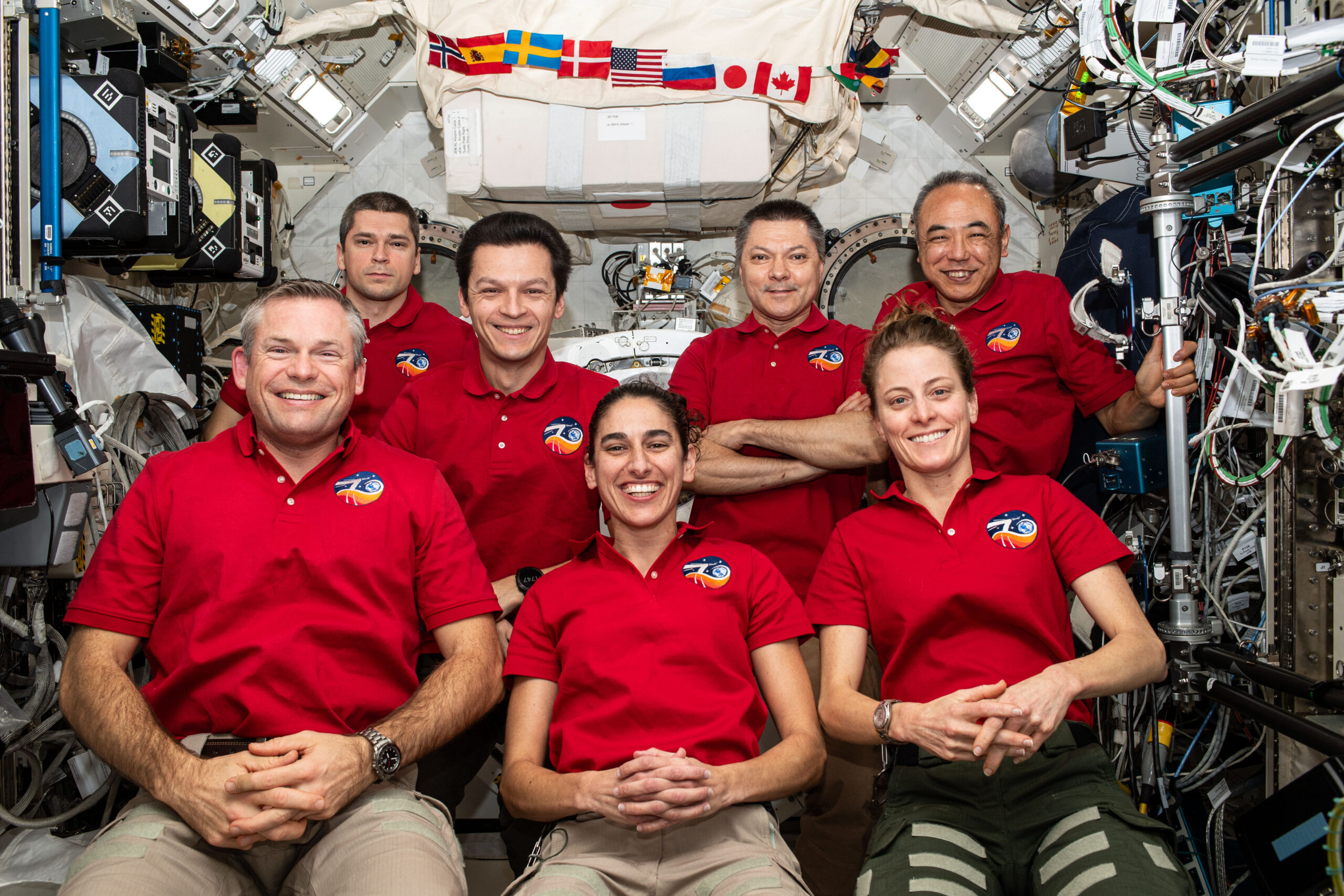
“Probably the best hands possible”, Mogensen remarked of Kononenko’s experience, as he shook the next commander’s hand on Sunday and passed over the station’s ceremonial “key”. Offering their own personal reflections, Furukawa and Borisov noted the “bittersweet” nature of returning to Earth, whilst Moghbeli stressed that the mission had been “an adventure of a lifetime, something I’ve dreamed about as a child” and that the ISS as both an entity and an idea offered “an indication of what we can do when we work together”.




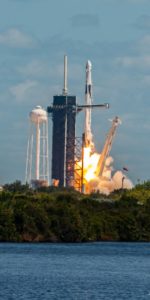
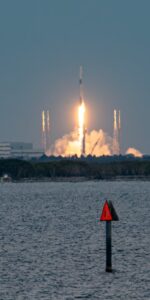
3 Comments
Leave a Reply3 Pings & Trackbacks
Pingback:Crew-7 Prepares for Space Station Departure - Space Holics
Pingback:Soyuz Crew, Cargo Dragon Await Space Station Launches 7.5 Hours Apart on Thursday - AmericaSpace
Pingback:Soyuz Crew, Cargo Dragon Await Space Station Launches 7.5 Hours Apart on Thursday - SPACERFIT